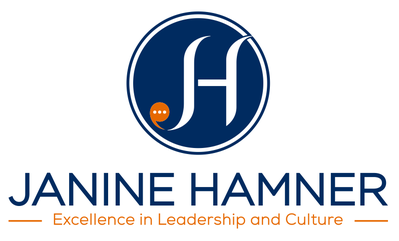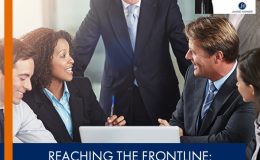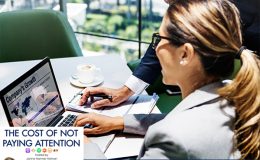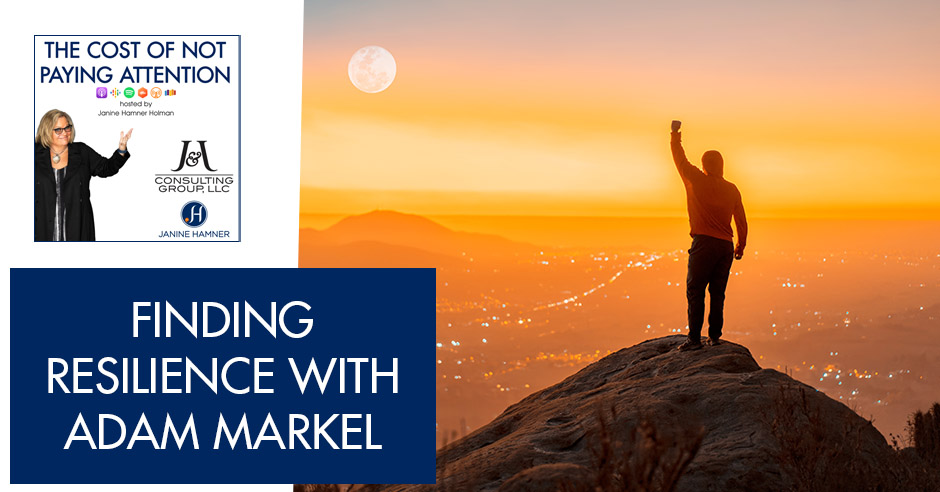
The world today is experiencing a period of unrelenting change. If you don’t embrace a resilient mindset, you could be lost in the waves and struggle to find your true purpose in life. Janine Hamner Holman chats with her business mentor Adam Markel about the power of having a change-proof identity. Drawing inspiration and wisdom from his personal experiences (as well as Will Smith’s infamous Oscar slap), Adam shares practical ways to disassociate yourself from your possessions and craft a fulfilled self you can genuinely be proud of. He also talks about several recovery rituals that will allow you to pivot and reinvent yourself into a resilient and purposeful individual.
GUEST: Adam Markel | LinkedIn | Visit their Website: https://adammarkel.com/
HOST: Janine Hamner Holman | [email protected] | LinkedIn, Facebook, Instagram, and Twitter
—
Listen to the podcast here
Finding Resilience with Adam Markel
What am I paying attention to? Resilience. Given who our guest is, this is not a surprise at all. Before I introduce our esteemed guest, who I am thrilled is here, I’m going to tell you a story. I got a bill from the City of Los Angeles for $3,000. I don’t live in the City of Los Angeles. My business is not incorporated there. One of my clients is a very big entity in the City of Los Angeles. I have that client, so I owe some taxes. I don’t owe $3,000. I get to have a phone call with some folks in the city of Los Angeles. What is interesting to me is that I got thrown into a shame spiral about being a bad business owner. I thought “I can’t handle all the things about being a business owner.”
This kind of thing happens to humans when we get triggered by something. The reality is that intellectually I know I’m a perfectly fine business owner. I’ve owned my business for many years. I’ve been doing all the things. My business has grown every year. Year five, everybody says, is the year where you hit your stride. I’m definitely hitting my stride. It was fascinating how quickly I was thrown from knowing all of those things intellectually into this feeling of imposter syndrome, “I can’t do it. I’m not enough.”
One of the many things that I have learned from our guest is that resilience is not so much about what happens to us. It’s about how we recover. I used some of the tools that I learned from him and leaned into some of my support systems to help me recover and get back to myself when I thought “I’m not doing great.” With that, I would like to introduce our guest.
Adam Markel is the author of a best-selling book Change Proof: Leveraging the Power of Uncertainty to Build Long-Term Resilience. Adam is also a keynote speaker, a husband, daddy and granddaddy to a beautiful baby. He is an amazing business mentor. He is also my business mentor. You know those relationships which along the way you think, “This is going to be good for my business. It’s going to be interesting. I’m going to learn some things from this person,” then you fall in love. You think, “Where have you been my whole life?” Not in a romantic way, rather the heart of who I am is in love with and has a profound gratitude for who he is. He is generous, funny, smart, and is often knowing exactly what I need in the moments that I need it. As a superb author, keynote speaker, husband, daddy, business mentor and my very good friend, welcome to the show, Adam Markel.
Thank you. It’s a pleasure to be here with you.
I am glad that we are making the time to have this happen.
I appreciated the story that you told and the way that you used it as it means to highlight the resilience thing, the thing that we’re sometimes not paying attention to. In this instance, you are paying attention to it and how it is that you also incorporate that into the kind of conversation that we can have because I am your guest. I’m thrilled about what that’s going to look like.
I don’t know what it’s going to look like because you didn’t tell me and I appreciate that. I’m a keynote speaker. I research resilience. I talk and train a lot in the area of workplace expertise. That can be a dry topic. To be able to keep it lively and engage your audience, you must be unpredictable. I love the fact that we’re off to an unpredictable start.
That’s how I love to do this show. I generally don’t prepare my guests or myself any more than what it is that I’m going to riff on in the beginning, so I have an idea of what that is. It’s an organic conversation. Adam, what is something that you have become aware of that people are not paying attention to, either consciously or unconsciously? What is the cost of that inattention?
There are probably a lot of things, but the one thing that came to me was thinking about inflation. I know this is a random thing, but it’s on a lot of people’s minds. It’s not everyone’s mind. It’s certainly a concern. It’s part of what we’re all dealing with in a variety of ways, whether we’re business owners or just getting food on the table for the family. I was thinking about the part of inflation that is useful and that is something that we will benefit from. I was exploring that and had a conversation with somebody who has a different expertise than I do and a different experience than I do in the area of innovation and how innovation occurs.
I said to this person, who is a guest on the Change Proof Podcast, “Tell me if I’m barking up the wrong tree here, but I feel like innovation, when the need is great, it’s the mother of all invention, etc. When inflation is high, tell me in your research and expertise, isn’t it more likely that there will be a disruption that will allow for certain products and services to be delivered more inexpensively because people are paying more than they maybe need, want or have to be?” He said, “That’s absolutely the case. You’ll see that in a variety of ways.”
When inflation is high, there is a disruption that will most likely happen. Certain products and services will become more inexpensive as people pay more than they need to. Share on XHe spouted off some different examples. He said, “Coming soon is the fact that there will be more and more autonomous driving. At some point, we will see autonomous vehicles being used in a variety of ways that they are not currently allowed to be used and are not a part of everyday life. When that happens, we will see a change in something that has not changed since the invention of the automobile.” I thought, “This is great. Tell me what hasn’t changed.”
He says, “What it costs to drive an automobile, to have an automobile that you own is about $0.70 per mile. That’s been the case from the beginning because they were very expensive, but when you adjust for inflation over the years, it’s still about $0.70 per mile to own an automobile. When autonomous vehicles are used in the way that they are likely to be used in the next years, the cost to operate a vehicle will be about $0.25.”
Vehicles that are run by big company names that we all know, the disruption may cause some automobile manufacturers to go out of business completely. Others will consolidate. Others will pivot in some way, shape or form. Know the book I wrote some years ago. It’s a different thing, digression. Ultimately, because of those changes to the average consumer, the cost to have a vehicle take you from point A to point B on a regular basis in your life to use for the things like going grocery shopping, commuting to work, taking your kids to a ball game is going to be $0.25 per mile as opposed to $0.70. It’s going to drive major savings.
Is that because then we will recapture that time and be doing something else with that time or is it because literally the cost of ownership, what it costs to buy a car, for gasoline, insurance and all of the things will dramatically reduce?
Almost to the point of zero because what will happen is many people, and we see this with Millennials and Gen Zs already, will say, “I don’t need to own a car.” First of all, in California, by 2035, combustion engines or gasoline engines will not exist or be permitted. I don’t know exactly whether that means that people will be grandfathered who own some, but they won’t be selling any new ones. You won’t see dealerships and all that kind of stuff. Right. We know that the gas-powered automobile is not quite a dinosaur yet. It’s not the horse and buggy, but it’s on its way to extinction.

Resilient Mindset: Many millennials and Generation Z’s choose not to own a car. With this mindset, gasoline engines may cease to exist in the future. It may not be quite a dinosaur yet, but it is on its way to extinction.
EVs will be the thing and then autonomous EVs that you will not need to own. You won’t own a car. You won’t have to own a car. You won’t have to have automobile insurance nor the expenses that you were familiar with. They won’t be a thing you have to spend money on. You will spend money to have those cars take you to and from. When you add up, according to his calculation, what are the predictable costs of that experience of getting where you want to get safely, securely? It’ll be about 1/3 of the cost that it is to people now. That’s amazing.
You live a little deeper into Southern California than I do. I live outside of the city of Los Angeles. The city of Los Angeles is a car culture. When I was living up in the Bay Area before I moved to LA, one of the things that had me think “I do not want to live in Los Angeles” was I didn’t like the idea of being judged by the kind of car that I drive. There’s a lot of status, in some places in the country, put on what kind of car you drive.
For a while, there was a lot of status if you had a Prius because other kinds of environmentally friendly cars didn’t exist. If you had a Prius, you were an eco-warrior. Now, if you have Tesla, some might think the same thing, or other things because of all of the issues around Tesla. If you have a BMW or Honda Accord, there is status in this city. It has me think about how much we internalize those status messages about who we are. I’m going to have a guest soon with whom I went to high school. We probably never said a word to each other in high school.
Different clicks.
I was talking with my folks about this and I said, “High school was a caste system.” My dad said, “You mean a click system?” I said, “No, I mean a caste system.” It wasn’t like those at the bottom of the caste were begging in the streets. Thankfully, I both grew up at a time and went to a high school in which the mean girls’ stuff that we hear about today would not have been tolerated.
Sean Duffy is the person who’s going to be my guest. He was in the elite crew. He was a triple threat: he was book smart and got good grades, an athlete, and beautiful. Fast forward four decades and, in my mind, he’s still in that category, and he’s an artist.
Being an artist was not at all within the categories of any of the castes. That was not a thing that kids were in my high school. There weren’t even drama nerds. There were some kids who did drama, but that wasn’t what their identity was. It has thrown me into this conversation around identity. It is also connected to the conversation you and I were having about identity. With what’s happening with automobiles, how connected some people are to their automobiles and how much it has to do with how we think of ourselves, it occurs to me that there’s an opportunity that we can take advantage of if we decide to disassociate ourselves from some of the material things that we cling to as part of our identity and rethink some of how we craft our identities for ourselves.
What do you think about that?
There’s an opportunity to do that for sure and maybe always. I think identity is such a powerful motivator and inspiration to us.
We can get hooked in negative ways about our identity or in ways that don’t serve us.
That’s for sure the case. There are seasons of certain identities. People think that, somehow or another, they’re supposed to be discovering their reason for being. That’s why they’re here for all eternity, I suppose. I don’t think that’s the case. Having written a book called Pivot, which is a book about personal and professional reinvention. My feeling is quite the opposite. We’re not locked into an identity for any longer than we want to be.
You can get into what we used to refer to as the pivot phone booth. It’s like the Superman analogy. You can get in that phone booth anytime you want and come out differently. Maybe it sounds a little canned or simplistic, but it is true. My philosophy is that our only identity or purpose is to be. We’re here to experience being humans. This is a human experience. It’s varied, it’s a dynamic environment. You can call it good or bad, up and down or anything you like. There’s a lot of duality, complexity and nuance. I do believe that primarily what we’re here to do is to experience it. That said, we also can’t sit around just experiencing life.
As somebody once said, “They’ll come and take your furniture.” We do things but we’re not locked into doing any particular thing for any particular length of time. I was fortunate to be a guest on a show of a Millennial business owner. We were having a pretty animated conversation about this kind of thing when he said to me, “Imagine my audience,” because his audience is filled with people in their 20s and 30s. He said, “I think they’re neurotic about getting it right, not wanting to get it wrong and wanting to get it right quickly.”
I started going into an expletive tirade on that topic because I believe, “You’re just not going to get it right. Maybe you will get it right for a period and then it will be wrong. Does that mean everything you did to that point was wrong because it’s not right anymore? Who makes up these crap stories? I know the answer. We do. That’s who makes them up. We can also decide that it is just that. It’s a nonsensical story that we don’t have to buy into. Certainly not after we become aware that that’s what’s really going on.”
I want to connect this back to resilience. I want to marry pivoting and our ability to reinvent ourselves and decide at any point. When we think, “That is what I thought. That was my frame. That was the structure I was working under. That’s not working for me anymore. I want to change it.” That change process, that pivot can be challenging.
What are our opportunities for recovery on the other side as we come through that change process? Goodness knows, we have been in a period of unrelenting change. Many people say for a number of reasons, “This train is not stopping anytime soon. If anything, it’s going to speed up.” If we haven’t got good at change management, one of the things that I help with, and if we haven’t got good at resilience, one of the things you help with, we’re in trouble. Give me your brilliance on all of that.
I’m going to start with this idea of recover. You said, “How do we recover?” Your story was one about not fighting with yourself over this letter your received that made you reactive. It’s more than that. I get that people nowadays are more easily triggered, which means anybody we meet whether it’s the supermarket cashier, the driver next to us at a signal or the person on the school board. Whomever it is, they may be more easily triggered and there’s a reason for it.
As we saw with Will Smith, which I was interestingly interviewed by Psychology Today to talk about this as a resilience researcher and expert, they wanted to get my perspective on that event when it happened the week it occurred. Everybody knows that the Will Smith incident, which is part of his legacy and his brand. Not one that he wanted, but one that’s there nonetheless. They said to me, “What are your thoughts on what occurred?”
I said, “You guys covered the psychology end of it. I feel like the reason we saw him snap was because he was depleted.” He was depleted and there’s a myriad of ways that we become depleted, like when we react the way you were describing when we receive something unexpected, ‘I got this bill. I should have known. I should have had a handle on this. This is stressful. I’m a bad business owner,’ all the worthiness, the deserving stuff, it’s easy to go to that place. That ultimately has one net effect. It depletes us and our energy. We need a lot of energy to be patient. Whether it’s with our kids, someone else’s kids, a stranger, or that person who leaned on their horn because you weren’t immediately hitting the gas when the light turned green, when we are depleted or less than at our best, we are more likely to be something less than our best.
When you are most depleted, you are more likely to be something less than your best self. Share on XThat’s what happened with Will, I believe. He’s living an ideal life, at least in terms of the people who look at him from the outside. Everybody would love to switch places, but meanwhile, he’s sitting there in that seat. In front of a worldwide audience, we watched him process very quickly what was happening and come to the conclusion that it was a fight-or-flight situation. He did not pause as explained in my book, Change Proof. He did not cover these three important steps of pausing, asking, and then choosing.
He simply went to the choice or the reaction, which was, “I defend my wife at all costs. This is a life and death moment for her. I am a warrior to defend her honor at this moment,” parenthetically in a way that he wasn’t able to do for his mother when his mother was being abused when he was a young man. In hindsight, 30,000 people look at it and go, “That could happen to anybody, but it happened to Will Smith.”
To me, when you see that happen, it’s beautiful on one level because if you see some random person lose their crap on somebody at a light, flip them off or get out of the car in a road rage incident, you think, “It’s part of what’s wrong with the world.” When someone like Will Smith does that, it’s an indication that the things that we think, going back to your comment earlier about identity, are the most important in our lives do not necessarily make us content or bring us peace. The things that will gain us what we’re most working to attain, he has every one of those things.
He’s a famous celebrity and has more money than you could ever count, etc. He’s got a gorgeous family, healthy kids, and all these things. He’s going to win that night the Academy Award. The peak of performance in that industry is going to be bestowed on him on the same night that he’s going to get on stage and smack somebody. Commit an assault on someone that he could have gone to prison for. Many people less famous than him would be jailed for now. You go, “How does that happen?” To our point, what could have been done about it beforehand so that it never happened?
Our research and perspective on resilience are a bit different than a lot of what’s been taught and even what people think based on the media and what they’ve learned. We think of it as two paradigms, this old Rocky Balboa paradigm where everybody thinks, “If you can take a punch, you’re resilient. If you get knocked down and get back up quick, every time get back up, you are resilient.”
It’s about endurance, “How much can we take? How much can we endure?” What we’re seeing in front of us is a world of people like Will Smith who’ve been taking it. Stress is mounting, one thing on top of another. This seemingly endless exhaustion. Perpetual tiredness from the onslaught of everything that is coming at us all day long, content, the media, aggravations politically, socially in every way, then our isolation in the pandemic.
If you couple those things together, it’s like a Molotov cocktail: when we are so depleted and our paradigm for what to do about it is simply to endure it. It is a marathon that we have to run endlessly. It only ends in one place, in my opinion. That’s what we saw with Will. It ends in anger, anxiety, depression, suicide and substance abuse. To the point in the business world, it ends in burnout and all the associated things of burnout, like lost productivity and lack of engagement. The Great Resignation is only a reflection of all of that depletion that was not being addressed.
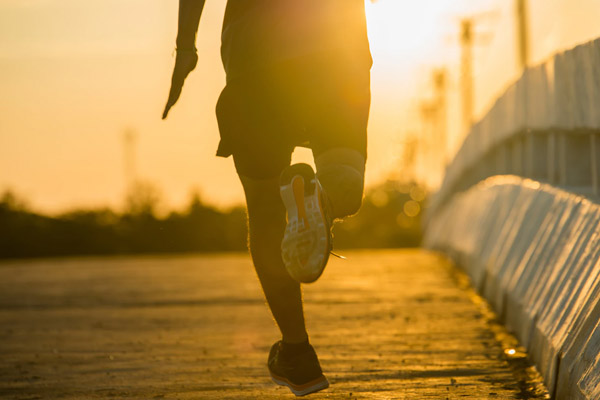
Resilient Mindset: A marathon where you run endlessly only ends in anger, anxiety, depression, substance abuse, or suicide. At some point in the business world, it ends in burnout.
The answer is recovery because the new paradigm for resilient individuals, leaders and organizations is a capacity to recover. By recover, when you said this, it was very pointed for me. The way you used that word, it is a verb, an action. The way you use recover is how do I get back to myself?
It is part of it. The way we use the word recover, it’s how do you restore, regenerate or reset? How do you recharge? It’s not the recover as in, “I’ve slipped and now I’m recovered. I regained my composure.” There’s an element of that, but it’s more the concept of, “What do I do to take care of myself mentally, emotionally, physically, and spiritually so that I am less depleted?” I have filled my tank back up. I recharged my phone. We’re all addicted to this thing. You go one day without sticking a charger in it. What do you see at the end of the day or before the end of the day? It’s a black screen.
To me, whether it’s Will Smith or it’s the person at the light who lost their shit, it’s the culmination of exhaustion that does not allow us to then ask questions the way you were asking. Could I reframe this? If I was going to reframe what’s occurred, getting this letter or what have you, what meaning I’m making out of getting this letter with this unexpected bill, is there another way for me to look at this, put it in a different frame? What does that look like? That pausing to ask those questions to find that you have a lot of other ways to look, “I am a savvy business-woman who is succeeding after five years.”
Most businesses by five years don’t exist anymore. More than 90% of them are gone. To be in a business that has momentum and is succeeding after five years, you change the framework and everything then is different because you did that. If you are exhausted, that higher level thinking, critical thinking skill, critical feeling skill, EQ and if you train on this topic without those skills at that moment, you’re hooped. You fall victim to that on to that thing and it takes you out.
If you are exhausted, that higher level of critical thinking skill is lost. Without them, you will fall victim to anger. Share on XPart of what I love about the journey that I’m on is I talk about all this stuff all the time and I am still completely fallible in it with everybody else, a human who, even though I know this stuff intellectually, I still get hooked. I still fall down. How do I get up, recover or practice resilience? If there are folks who are reading and feeling like, “I’m in that kind of a place. I’m in a place of change. I’m in a place where I’m realizing I am depleted,” what are a couple of the tools that people can use to begin to step out of, step away from, or reframe the place where they find themselves?
We look at resilience when I’m delivering a keynote or sometimes consulting an organization in this space. The first thing that we do is redefine the paradigm as one of recover versus endure. We understand that’s the case. The second footing that we sink into the ground is that at the time to create your resilience is before you need it. The time to be working on resilience isn’t right at the moment that the pandemic throws your business sideways or at the moment when Chris Rock is making jokes about your wife on stage.
It’s the work that you do before you are going to need it that makes that work all the more usable and powerful. We work on our resilience beforehand. I can share a personal story about that in a moment. The third piece is that you create rituals. You ritualize recovery. That falls into these four different areas, mental, emotional, physical and spiritual. We literally craft and create rituals to recover in each of those four specific zones. Somebody might be asking, “Why are you calling them rituals? You mentioned spirituals. Is religion somehow involved in this?”
Definitely, not. I have a great deal of faith in my life, but I’m not sharing that faith in what we’re talking about. Spiritual in those four quadrants means our alignment. How much we feel on the inside the things that we’re doing are congruent. For example, we have a resilience assessment proprietary tool. We’ve worked with almost 5,000 leaders across the globe, from large Fortune 50 companies to startups and pretty much everything in between, to assess where they fall in these four different areas. In the spiritual zone, for example, Question 13 says, “I am engaged in a livelihood that is in line with my core values and beliefs.”
Across almost 5,000 of these assessments, the median answer score out of 100 is 88 in that area, which is green in our world. There are sixteen questions and it takes three minutes. That is what’s wonderful about this assessment tool. There are four questions in each zone, we know how people are mentally, emotionally, physically, and spiritually resilient in those four areas.
In that fourth area, the spiritual one, we see green, even though across the whole of the sixteen questions, the aggregate of all of those answers produces a median score of 64. That means that leaders across the globe in every industry you can think of are leaving about 1/3 of their productivity. It’s not shocking. We all get that. That’s why consultants have work. We know that that’s truly the case, but we’re identifying not only that, that it is the case, but why it’s the case and where we’re specifically weak that we want to focus on. Question 13 is a bright spot.
Question fourteen says, “There are gaps between what I say is important to me and what I do with my time, how I allocate my time, energy, and resources.” That’s more often than not a score in the 50 and it’s red. What that tells us immediately is there’s this thing that we know that we’re doing. We’re doing work that makes us feel like we’re on the right track. We’re contributing something. It’s valuable. We feel good about it. We’re not selling out.
At the same time we think “But I’m not spending my time the way I want to be, like I’m not seeing my family, not spending enough time doing volunteer work or whatever it is that I want to do.” There’s a disconnect. That’s the spiritual component. It’s nothing to do with religion when I say rituals. These are things we do consciously versus things that we do unconsciously.

Resilient Mindset: We are doing what we feel brings us on the right track. But if you are doing something valuable that does not allow you to spend time the way you want, you have to pivot.
What’s a good example of an unconscious habit? In the book, we use the example of a toothbrush. We have the toothbrush challenge. We ask people, “Which hand do you pick up your toothbrush with every morning?” Take one week to only use the opposite hand, whichever hand is non-dominant for a week and see how much you are a creature of habit without thinking about it.
Up until that point, you weren’t thinking about which hand you use to brush your teeth. You do it unconsciously. Rituals, for us, are things that you do consciously and intentionally, that ultimately will become unconscious because eventually you won’t have to think about them anymore when you do them. For example, when it comes to the mental resilience side, most people are immediately putting their brain into a state of fight or flight because the second they wake up, they are producing cortisol, adrenaline and many people have adrenal fatigue in part because their day starts that way and continues as a cocktail of cortisol coursing through their veins all day long.
The first thing we’re doing is we’re picking up our phones.
You knew exactly where I was going with that. The first thing that they do is take a look and see, “What have I missed? Whether it’s missing something on social media, in the news, or almost as bad or worse, checking text messages and email right out of the gate.” This is the excuse I get from folks, “I use my phone as my alarm clock.” To which, I reply, “Have you ever heard of this thing called an alarm clock? Go on eBay and get one of the ones that wind up then you can work on two rituals for your mental resilience all at the same time. You set your alarm at night, wind it up, and that tick becomes your meditation to go to sleep.”
When you wake up in the morning, you give yourself, and this is a simple ritual, the first ten minutes of the day for yourself. I believe 30 is optimal if you give yourself the first 30 minutes where you are choosing to be in stillness. Whether it’s for gratitude practice, prayer or it’s simply to just not have any tech or any other things other than you are waking your self, thoughts, ideas, inspirations and intentions for the day, as opposed to letting the world on your device direct your attention, focus, energy, etc. It triggers you in many ways, which contributes to exhaustion or depletion. It starts the moment you wake up. I’ll pause there because there’s a myriad of rituals for mental resilience, emotional, many for physical and just as many for the spiritual side.
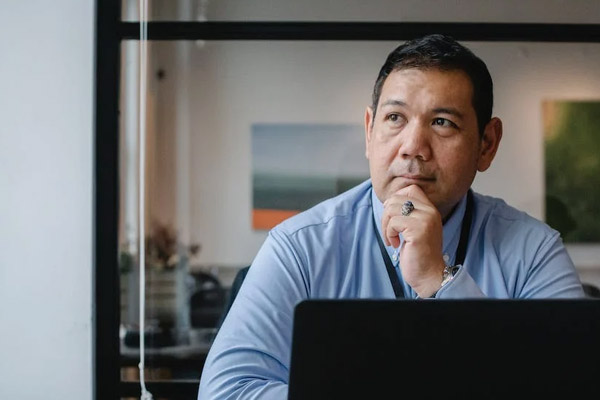
Resilient Mindset: Give the first 10-30 minutes of the day to yourself. Choose to be in stillness, whether for gratitude practice or prayer, and simply do not use any technology.
There’s one other piece of this that I’ll share, which is a nuance to if you’re going to create something like a recovery map, which is what we work on with folks and in a presentation. We say, “We’re aware now that what we want to do is ritualize our recovery because we’re weak in certain areas. Choose one thing that you’re going to commit to changing. One new ritual that you’re going to create. If you can create one new ritual in each of the four zones, fantastic.”
“If you can only create one in the mental, emotional or physical zone like somebody said, ‘This is my new ritual: I’m going to walk after every time I eat a major meal. After I eat breakfast, lunch or dinner, I’m going to walk.’ That’s it. Simple. They create a recovery map with one or more new rituals. I wouldn’t suggest choosing more than one in each of those four zones. You have something that you are now going to move forward with.”
The nuance to this is that you can not only create a ritual for each of those areas, try it on for size to test it, but you can also start to schedule them into your day as a part of a toggle process that we think is important because the creating resilience, working, practicing, performing resilience before you need it comes from this idea that you are in throughout the day. There are moments when you say, “I’m intentionally going to take a break and I’m going to do something that I know is going to restore me in some way.”
By doing that, by baking that into your schedule each and every day, you are, in essence, refilling the tank. If you’re a bank account, you’d be making more deposits than you would withdrawals. That back and forth between being fully focused on your work, and your life to sheer recovery and rest. Rituals can take as few as ten second or as long as the optimal time span of ten to thirty minutes. When you have the time, maybe on a weekend, there are things that you can also toggle to longer recovery methods. When you start to develop these as part of how you operate and operationalize your life, leadership and business, you will see resilience levels go up.
I love what you’re talking about. Getting into action, even if the action is inaction or meditation because something that I have noticed in my resilience and my recovery processes is that when I can get into action, that is when the change starts to manifest.
When we are learning new practices that are going to become rituals, when we find ourselves hooked by something, and we need to get ourselves recovered, it’s the action that we take after we sit for a minute or two, that we realize, “This is not where I want to be. This is not working for me. What am I going to do? How am I going to get myself out of this?” The action that we take begins the process of recovery when we find ourselves having fallen down.
There are two things that are interesting about this. One is that you can ask yourself the question, “What gives me energy?” When we talk about recovery, you can simplify this by saying, “What is it that will restore or give me energy?” You can say, “Is being around other people a way that I will regain energy or is being in a more solitary mode better for me?” If you ask yourself that question, you might say, “The last thing in the world that I want to do now that I feel exhausted is to be out to dinner with ten people tonight or to go to a mixer or networking thing.”
You could also be a person who loves to be around people. As soon as you get around other people, your energy levels increase. You might say, “That’s the perfect place for me.” You’re an action-taker. For you, a part of your recovery involves, “When I get in action, I experience momentum. I’m out of my way. I feel good.” Some other person might think, “For me to regain energy, I have to lie flat in a dark room.” No judgment. It’s not good or bad, right or wrong. It’s simply what’s effective for you. That’s why you have to ask the question, “What’s going to help me restore my energy?” When you get good at that, it doesn’t have to take very long.
Part of what I love about that question is that one of my mentors with whom I have had the privilege of working, Alison Armstrong, has a nuance to that question, which is “What gives me energy in a particular arena? When I need to be patient, what fills my patience tank, which might be different from when I need to be creative? What fills my creativity tank?” It might be different since I am a natural introvert. I get my energy from being by myself. It takes energy from me to be with other people. When I am with other people or I am being called upon to be on, that takes energy from me. What are the things that restore that energy, which might be different from what it takes for me to be patient or for me to be creative?
Thinking about all of the different arenas and buckets in our lives, for some of us, “What gives me energy?” is one thing or many different things. There are people, activities and non-activities that give me energy in different arenas. Being by the ocean gives me energy in many different arenas. It’s the reason there are so many pictures of water in my office. It has been a process of discovery. I think “This would give me energy in this arena.” Test it out. Maybe not so much, okay. Explore and be willing to try on a few different rituals and realize, “That works. That doesn’t work so much. It helps a little bit, not as much as I need.” I love that nuance to it as well.
Arena is a great word because of the readers who are in either business for themselves or part of the operation of a business, or in a job of any kind. If you were thinking of yourself in that role or arena like it’s an Olympic arena. Not that every single day or every activity is an Olympic performance.
Don’t get me wrong, but if you were an Olympic athlete, then everything that would contribute to leading up to that performance would be of a certain level of importance to you. I often will ask an audience, “If you were an Olympic athlete, what would you have done last night differently than what you did last night?” We get a lot of laughs because most people didn’t get enough sleep, stayed up late, drank too much or they ate everything they weren’t supposed to eat.
They didn’t eat what an Olympic athlete might eat.
This is useful information. To me, this is information that I honestly wish I had known when I was in my twenties. I’m glad I know it now. I’m glad I’ve been involved in researching it for some time now. It’s useful only, of course, if you make use of it.
If you put it into action.
There’s a link for people to take their free Resilient Assessment to find their own baseline score. Back to Will Smith because he’s an example of what it looks like to have a domino tip. He wasn’t there at that moment. It could be his best.
I have a moment that’s very different from his, but it’s the last day of my vacation. I was in Mexico with my wife. I’m squeezing and am going to suck the last drop of juice out of this vacation. We were in this beautiful resort in Mexico. We had to go to the airport and had 90 minutes to leave. We still hadn’t packed. We did have a lot of stuff. It’s going to take a half hour to pack and get to the airport. I got about a half-hour left. I know Randi would’ve loved it if I had said to her, “I know it’s a little early, but why don’t we head back to the room so we can relax and take our time packing so we won’t be in a rush at all.”
“That’s such a great idea.”
She would’ve said, “Who is this? Where is my husband? What have you done with him, body snatchers?” I said to her, “Do you want to go for a walk on the beach? Should we have one more walk before we leave this paradise?” She says, “Sure.” After many years of marriage, that’s not a battle that she wants. I have my glasses on. I’ve been swimming in the ocean all week. It’s on the Pacific Ocean side. It’s a very steep beach, with a strong current.
I went in the water to cool off because we were sitting out on the lounge chair. I didn’t plan on swimming. I had my sunglasses on and the shore break wave reared up. I’m a lifeguard. For people who might know my story, I am a swimmer. This wave comes up like I’ve not seen all week. It’s a monster. I couldn’t believe it. I screamed for Randi to get back. She turned her back to go up. The wave literally carried me up. Instead of a dolphin diving through the wave, I go up because I have my glasses on.
“I’ll just go up and come back down. It’ll be fine.”
I came down in a heap. It must have been thousands of gallons of water that slammed me down into the sand or a rock. I don’t know which, but either way, my right knee snapped backward, hyperextended and broke in two places, as it turns out. I need help to get out of the water. I can put no weight on this leg. I’ve been an athlete my whole life. I know something is terribly wrong. We have a big problem. We get back to the lounge chair, Randi carrying me on one side and she goes to get help. I’m looking at my knee and knowing as I’m trying to massage it, move it and restore it back to, “It’ll be okay,” I know it’s not.
“It will be okay, but it is not okay at the moment.”
Back to this idea of a pause, ask and choose. I had some choices to make. The obvious one was to be fearful of what this meant to my life and my work. I was supposed to go to London to see my daughter in her overseas class. I was going to teach a class there. “There are a million things that are going on in my life over the next few weeks and months now. There’s all this uncertainty about how everything and anything’s going to be changed.” At that moment, my choice was to be afraid, in fear and probably irrational fear at that point. I’m thinking, “How am I getting out of Mexico? Am I going to need surgery?”
“I don’t want to have surgery in Mexico.”
My question at that moment where I paused to just consciously decide, “How am I approaching this now? What’s my frame?” What I chose to do instead was to literally say this to myself, “What can I love at this moment? What is there to love at this moment?” I had a lot to say in my head, “What is there that I can be grateful for at this moment?” For one thing, that wave could have killed me or snapped my neck. I could be paralyzed. Forget it. There were so many things. I had a lot to be grateful for in that moment. The last thing that was hitting me is that the guys were coming over to get me ice and carry me. I said to myself, “I wonder what I’m going to learn as a result of this show that I’ve now got myself into?”
It made all the difference in the world at that moment. I had options. What did happen, we don’t have to discuss, but it was a joy on many levels. I learned a lot. I missed some things and there were some consequences. Also, I gained so much that I will never forget it. In a positive way, I’ll never forget that experience. The thing about it is that it didn’t happen by chance. That’s the point here. I was preparing to be resilient before I needed to be resilient. That’s where it served me.
For a shorter period of time, I’ve been more consciously practicing this since about the time that the Pivot book was being incubated, which was 2013 and 2014. That’s a lot of time to be working and practicing performing resilience. I’ve needed to be resilient in other ways, but this is an example. You ask, “What does that mean to a business person or to be company leadership?” When you practice this and you are setting in motion to operationalize resilience before your organization, leadership or employees need it. If that had been done, we wouldn’t be losing people the way we’re losing them and they’re following whatever their expression is.
When business leaders practice resiliency, they are setting in motion the operationalization of this mindset even before the organization needs it. This can prevent leaders from losing people. Share on X
This has been wonderful. Thank you so much for sharing very personal stories and your wisdom gained over the many years of practicing resilience, for your modeling of the options available to us when we practice resilience so that in the moments when we need it, it is there. I appreciate you sharing what the opportunities for developing those muscles, practices and rituals can be. Thank you for your wisdom and above all, for your friendship. I love you.
I love you too.
Remember, great leaders make great teams. Until next time.
Important Links
- Change Proof: Leveraging the Power of Uncertainty to Build Long-Term Resilience
- Change Proof Podcast
- Pivot
- Adam on LinkedIn
- Adam on Instagram
- Alison Armstrong
About Adam Markel
 Adam Markel is a recognized expert in professional and personal reinvention. A highly sought-after keynote speaker, transformational leader and business mentor, he guides individuals and businesses to capitalize on change and magnify their impact.
Adam Markel is a recognized expert in professional and personal reinvention. A highly sought-after keynote speaker, transformational leader and business mentor, he guides individuals and businesses to capitalize on change and magnify their impact.
After building a multi-million dollar law firm, Adam became CEO of one of the largest business and personal development training companies in the world, overseeing more than $100 million in sales.
His unique expertise is in combining practical business tactics with accelerated learning strategies to embrace change, encourage innovation and increase sales for people and organizations worldwide. Adam Markel inspires, empowers and guides people to achieve massive and lasting personal and professional growth, whether it be as a keynote speaker, facilitating corporate workshops or mentoring individual.
